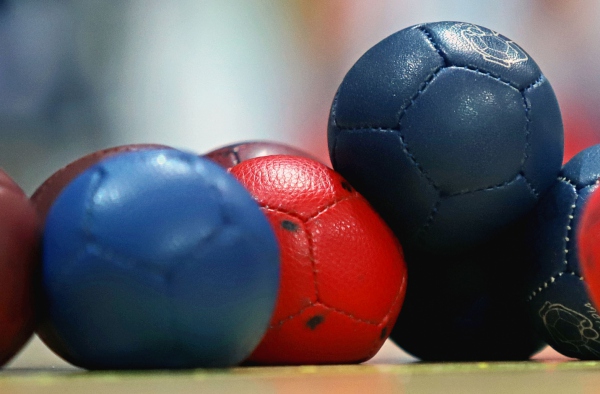Time is running out to make your comments regarding the rule change proposals. I have inserted comments in some of the threads on Facebook to generate more feedback. To make Boccia be the best it can be for all our athletes, it is important that we understand your thoughts. As you make any comments keep in mind fair play for everyone!
Here is the list of comments that have been made on Facebook by the Chair of the Rules Committee. If you have access, please join the discussion and make your comments there. If you do not have Facebook access, and do not have any friends that can comment on your behalf, then please email me any thoughts you may have to [email protected].
Penalty on the Jack?
This was a major controversy just prior to the Paralympics. There have been such few responses – does that mean we are all in favour of the clarification that was made? A violation deserves the appropriate penalty. Thanks, David Smith for agreeing. Luis Marta, you are correct – no player ever wants to lose the Jack to the opponent. No player ever wants to get a penalty for committing any violation, either. The easy solution is – Don’t commit the violation. The current rule is working, Dan Saxby, but since there are two practices, we need to ensure that the same practice is performed worldwide. The wording in our current rule supports giving the penalty and dealing with a fouled Jack.
As for the Jack being a ball, under definition, the Jack is the white target BALL. 11.4.1 throwing a ball…if it is the Jack…
It is not me that says each violation deserves the same penalty – Section 11 in the rulebook says that.
Picking up a ball on the opponent’s time:
I assume the clarification is clear and everyone agrees?
Red/Yellow cards:
Isn’t a yellow card a minor penalty – especially when compared to a red card? Carrying them over from Tournament to tournament seems to be unfair to me. I agree that they should be tabulated at single competitions. Under our current rules an athlete would not receive 4 yellow cards in one tournament. At the 2nd yellow, this becomes a red card, an immediate suspension and reinstatement only if the TD and HR agree to that. The third yellow card (if reinstated) would also transfer into a red card, since there was already one yellow card given prior in the tournament.
Every violation deserves the appropriate penalty. We can’t be lenient at International events and ignore penalties. We need to hold them accountable.
BC3 Sport Assistants being allowed to observe the final measure:
Once all the balls have been played, the end is “Finished”. There are no more balls that can change the score. The score hasn’t been declared yet, but the score can’t change, no matter who is watching. Allowing the BC3 SA to observe the measure, gives the SA the satisfaction of what he/she has accomplished for their team. And they can relax since the end is over.
Allowing BC1 SA’s to stand at the back to watch is very similar to allowing a BC3 SA’s who are usually seated near the front of the box (approx. 2m closer) but also not communicating.
Raise the chair height restriction:
Can anyone explain whether seat height over 66cm makes a huge difference? We already bend this rule (17.1) which says standard chairs “altered for everyday life” may be used for boccia. Not “altered for playing boccia”. Many do not have access to chairs with a lift. Does 10cm of cushion make enough of a difference to make this more fair?
Stop the time when the ball crosses the throwing line:
at the 2016 Individual World Championships in Beijing there were 283 ends played, including tie breaks, by the BC3 athletes (283 ends x two athletes =566 results). For 151 (26%) occasions there was 55 seconds or more time remaining, 292 (51%) occasions there was 30 seconds or more, and 38 (0.067%) occasions there was zero time left. Six balls for 3 to 5 seconds of rolling time for each would be 18 to 30 seconds each player for each end. A few extra seconds to consider when throwing the Jack.
Protests:
Do away with protests during the matches and settle any dispute on court, during the match with the HR and TD??
Going in other boxes to set up your ramp:
I don’t have a clear feeling on this one from you folks – do most of you agree that so long as at least one wheel is in the athlete’s own throwing box, that is enough? What are your thoughts on bigger boxes?
Pointer lengths
I am confident we will change this rule to 75cm
Target for penalty balls:
I’d like to see more discussion on this one, please! Either a circle or square is acceptable, but how do you feel about using the target to score penalty points, and how many penalty balls should there be?
Alternating throws:
Remember, your fellow Boccia enthusiasts are proposing these suggestions. The request here is to actually try alternating throws at your local practices, training camps, etc. and give an honest opinion. Make this a real attempt without preconceived thoughts about how it will not work. This is NOT a proposal for a change in this quadrennial, but based on the feedback after attempting this, it MAY be a proposal in the future.
There have been complaints, in the recent past, about referee errors in measuring, or just showing the wrong colour. This type of format would certainly resolve that. This format also relieves the stress on each athlete as you will always know who will be playing next.
Swinging the ramp:
At the beginning of each end the ramp must be clearly moved at least 20 cm to the left and 20 cm to the right after the referee indicates that side’s turn to throw. Do all BC3 athletes want this rule left as is?
Does it even matter if the ramp gets moved between shots? With the balls we now have, there are very few that roll exactly the same, so in most cases the ramp gets moved from the previous shot, anyway. Would it be more fair if athletes/SA’s were not required to make the swing? Most elite athletes and SA’s have a system that puts the ramp exactly back to the previous position by holding it against their knee, or leg; relining it up with the athlete’s shirt design; using graduated collars on a base with a swing arm; etc., etc.
Technically, we have not been enforcing this rule according to our own words: 15.4 Between shots the assistive device (ramp) must be clearly moved to the left and to the right. If a ramp is fixed to a base, and cannot be moved independently from the base, the entire ramp including the base must be moved to the left and to the right.
This says that if the ramp has a solid base that moves as one unit, that is fine; if the base does not move with the ramp when it gets swung, then the base itself must be moved. So, we have three choices, 1) remove this rule (then athletes are no longer required to swing the ramp) or 2) enforce the rule as it is written (bases must also be moved) or 3) change the wording (so bases do not need to be moved, only the ramps). Number 3 would disadvantage those with solid bases.


